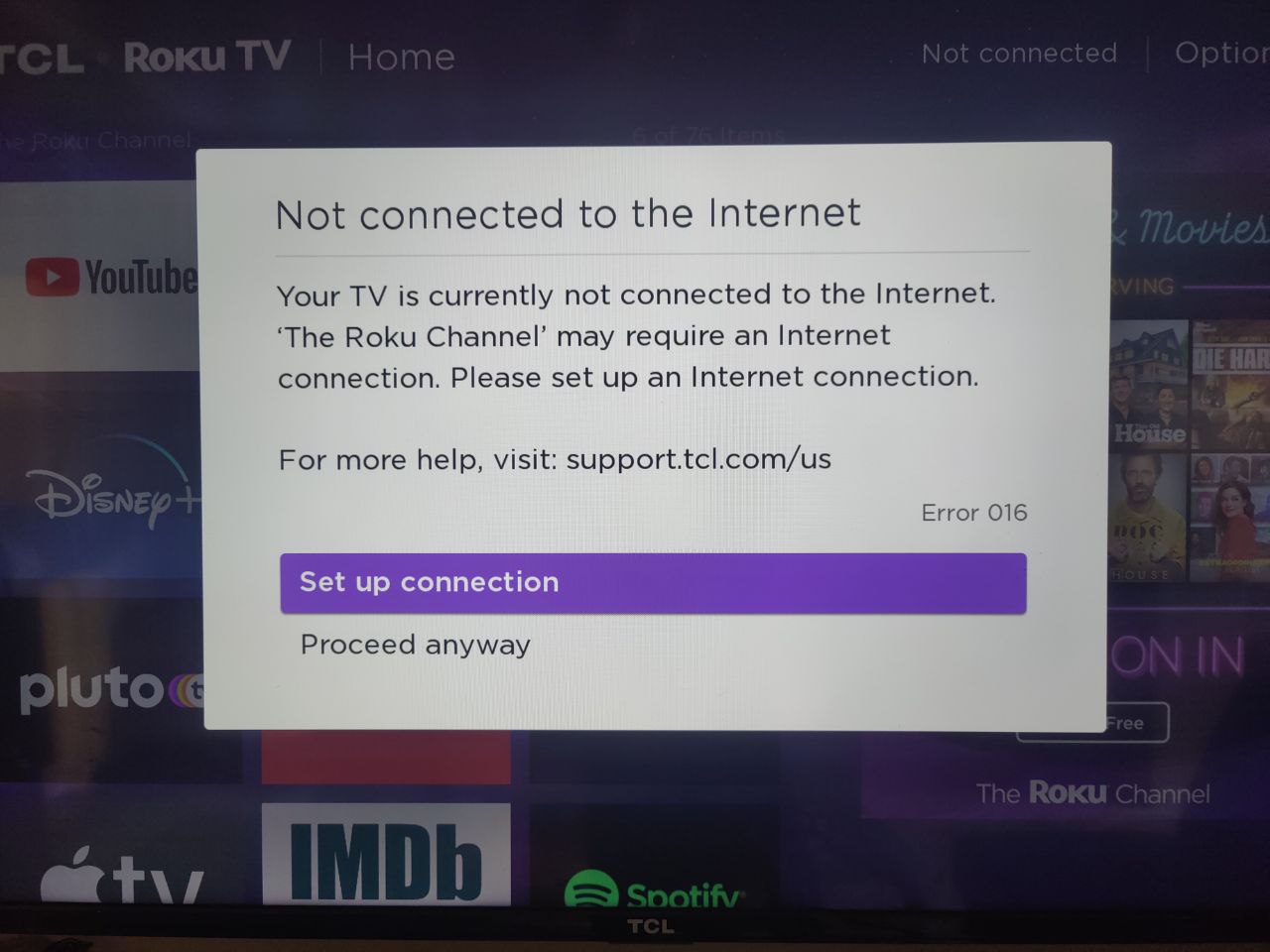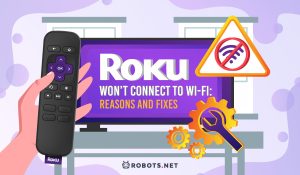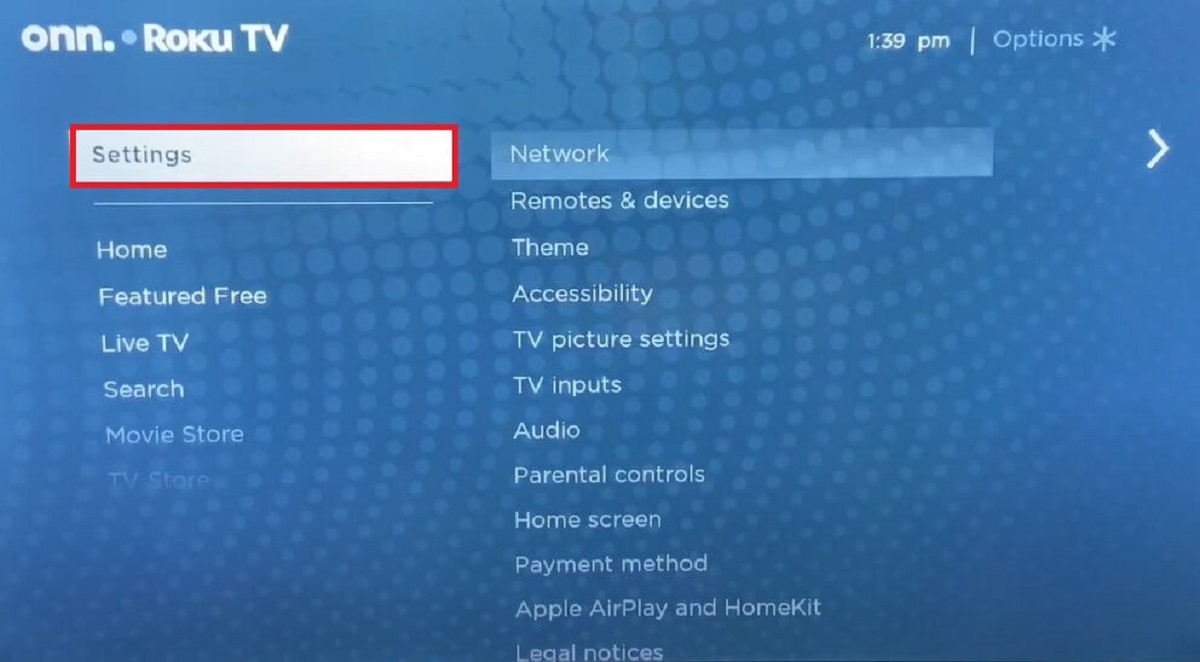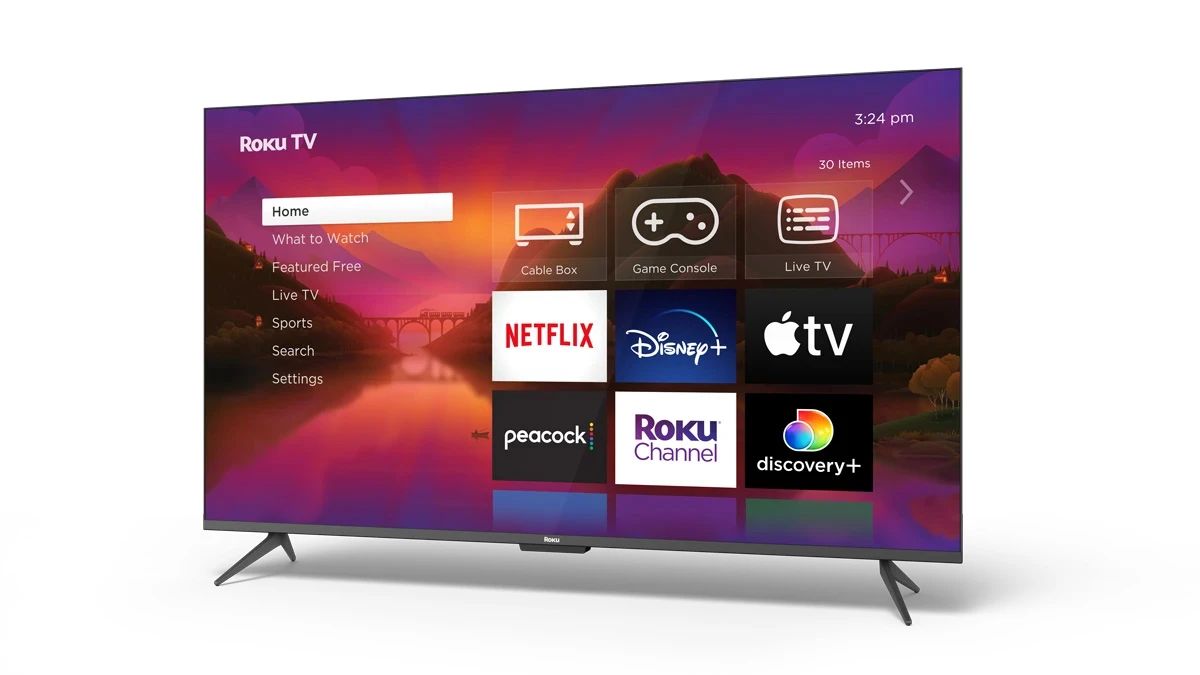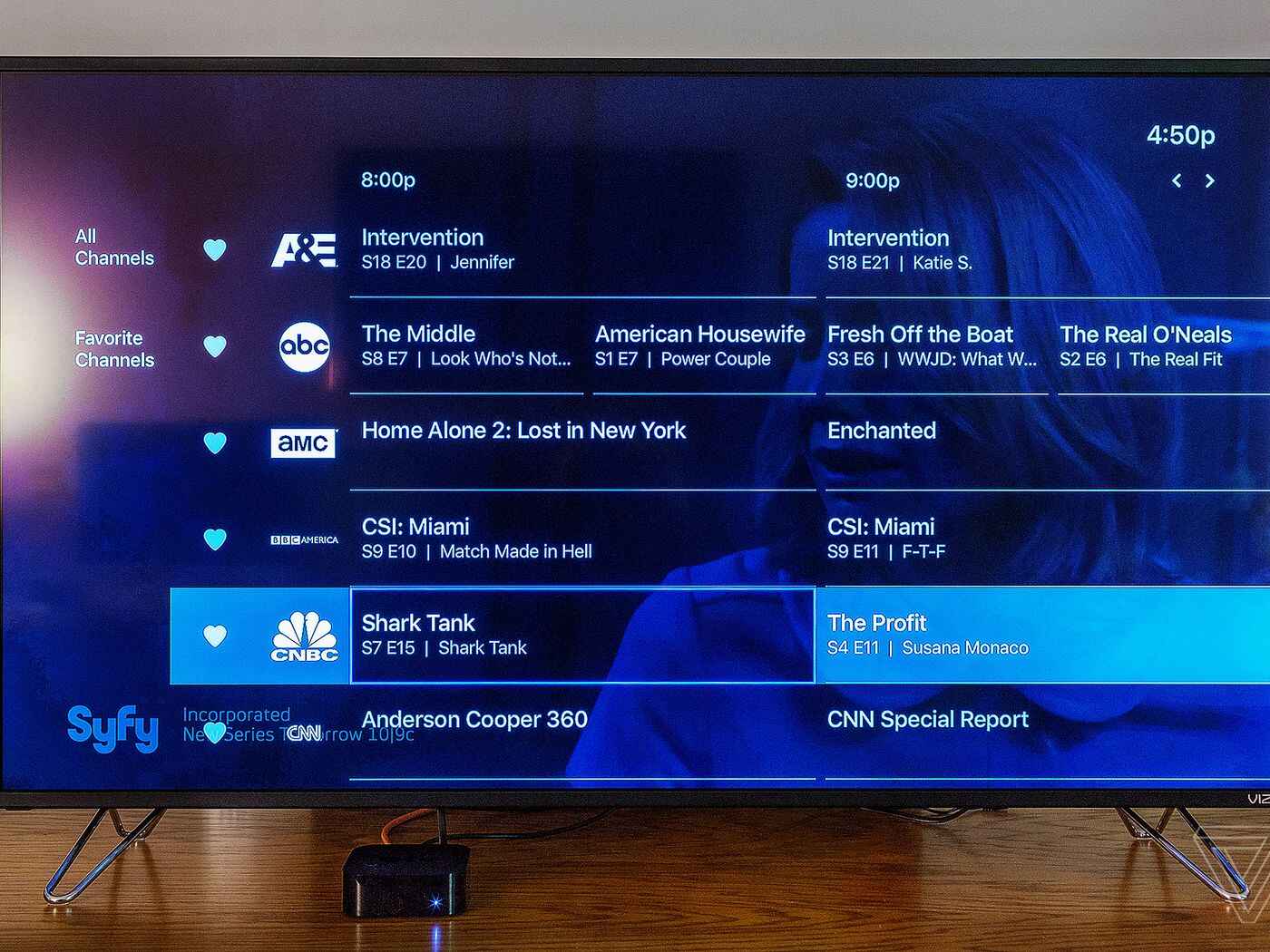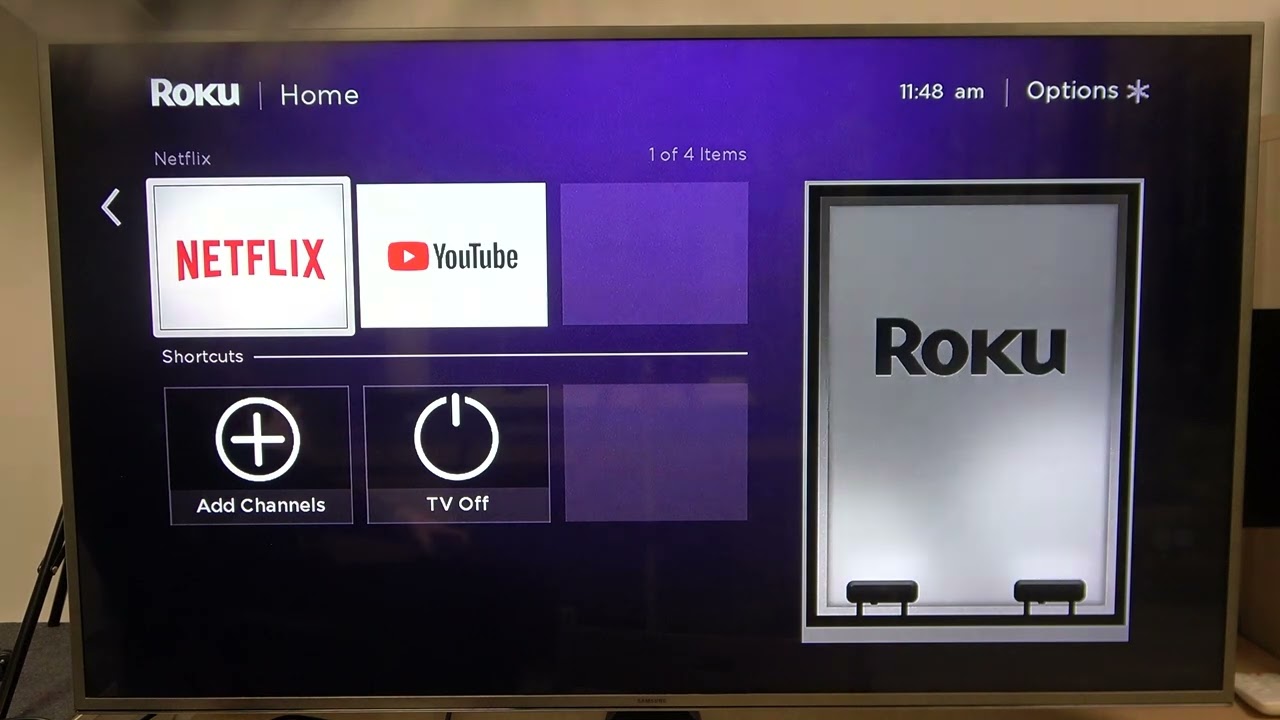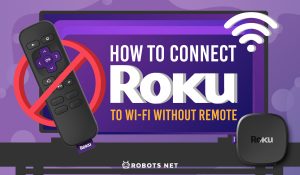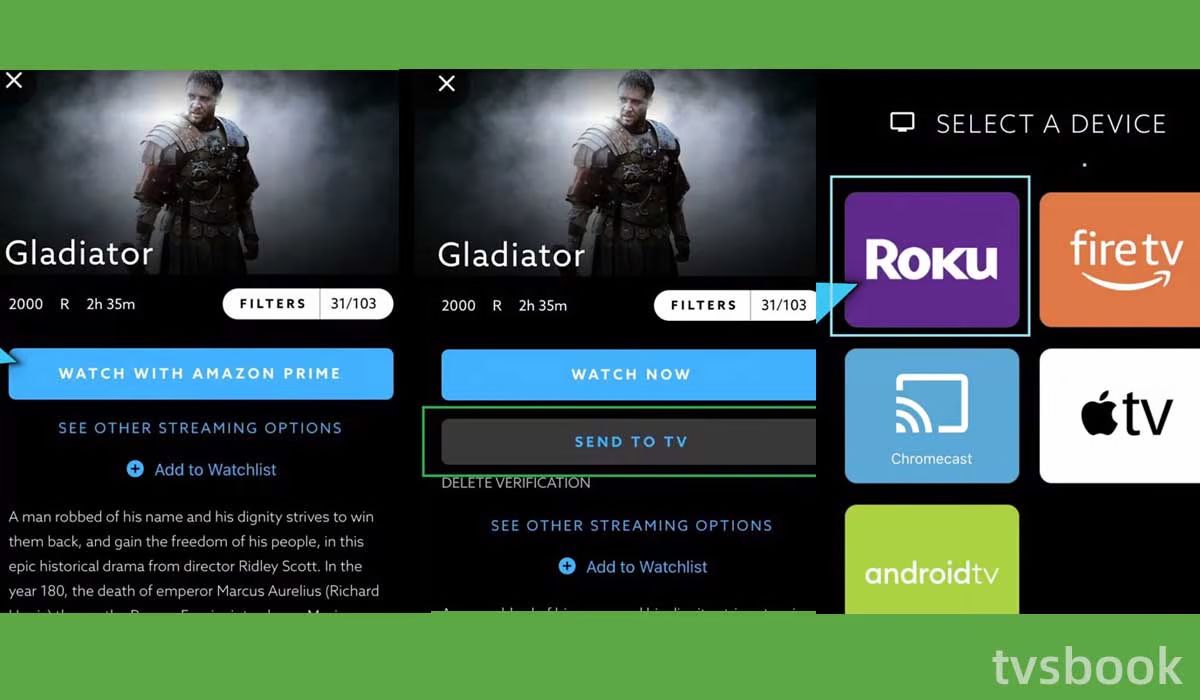Possible Reasons Why My Roku Won’t Connect to the Internet
Experiencing connectivity issues with your Roku device can be frustrating, especially when you’re trying to enjoy your favorite shows and movies. If you’re facing difficulties connecting your Roku to the internet, there could be several reasons behind this problem. Let’s explore some of the possible causes and what you can do to troubleshoot them:
1. Wi-Fi Connection Issues: One of the most common reasons why Roku fails to connect to the internet is due to Wi-Fi network problems. Check if other devices are able to connect to your Wi-Fi network. If not, try resetting your Wi-Fi router or contact your internet service provider (ISP) for assistance.
2. Incorrect Network Password: Make sure you are entering the correct Wi-Fi password for your network. Even a small error in entering the password can prevent Roku from connecting. Double-check the password and ensure it matches your network’s security settings.
3. Router Compatibility: Older routers or models with outdated firmware may have compatibility issues with Roku devices. Consider upgrading your router or checking for firmware updates.
4. Network Interference: If there are many wireless devices or other electronic devices causing interference near your Roku and Wi-Fi router, it can impact the signal strength and connectivity. Move your Roku device away from potential sources of interference such as cordless phones, microwaves, or other electronic devices.
5. Roku Software Update: Sometimes, Roku devices need a software update to resolve connectivity issues. Go to the Settings menu on your Roku and select System > System update to check for available updates.
6. Roku Hardware Issue: If none of the above steps work, there might be a hardware issue with your Roku device. Try restarting your Roku by unplugging it from the power source for a few seconds, then plugging it back in. If the problem persists, contact Roku customer support for further assistance.
7. Internet Service Provider (ISP) Problems: Verify if there are any known internet outages or service disruptions from your ISP. Contact them to ensure there are no issues on their end.
8. Network DNS Issues: Problems with the Domain Name System (DNS) settings can interfere with Roku’s ability to connect to the internet. Try resetting your DNS settings on both your Roku device and router to resolve any potential conflicts.
9. Firewall or Security Settings: Your router’s firewall or security settings may prohibit Roku from connecting to the internet. Temporarily disable the firewall or adjust the security settings to allow Roku access.
10. Router Configuration Settings: Incorrect router settings, such as MAC address filtering or IP address conflicts, can prevent Roku from connecting. Double-check your router’s configuration settings and ensure they are properly configured.
11. Outdated Router Firmware: Older router firmware can result in connectivity issues. Visit your router manufacturer’s website and check for any available firmware updates.
12. Roku Factory Reset: As a last resort, you can perform a factory reset on your Roku device. Keep in mind that this will erase all settings and data, so make sure to backup any important information before proceeding.
13. Roku Customer Support: If you have exhausted all troubleshooting steps and your Roku still won’t connect to the internet, reach out to Roku’s customer support for personalized assistance and further troubleshooting options.
By identifying and addressing the possible reasons why your Roku won’t connect to the internet, you can successfully resolve the issue and resume enjoying your favorite streaming content.
Wi-Fi Connection Issues
One of the most common reasons why your Roku device may not be connecting to the internet is due to Wi-Fi connection issues. There are several factors that could be causing this problem, and understanding them will help you troubleshoot and resolve the issue.
Possible Causes:
1. Signal Strength: If the Wi-Fi signal is weak or unstable, your Roku may struggle to connect to the network. Check the signal strength on your device to ensure it is within an acceptable range. If the signal is weak, try moving your Roku closer to the router or consider using a Wi-Fi extender to improve the signal.
2. Router Placement: The placement of your Wi-Fi router can also affect connectivity. Ensure that your router is positioned in a central location, away from obstructions, and at a suitable height. Avoid placing it near thick walls or electronic devices that could interfere with the signal.
3. Network Overload: If there are too many devices connected to your Wi-Fi network, it may result in congestion and slow down the connection. Disconnect any unnecessary devices or limit the number of devices connected simultaneously to improve your Roku’s connectivity.
Steps to Resolve:
1. Restart Router and Roku: Begin by restarting both your Wi-Fi router and Roku device. Sometimes, a simple restart can fix minor connection issues. Unplug the power cables from both devices, wait for a few seconds, and then plug them back in.
2. Check Wi-Fi Network: Make sure your Roku is attempting to connect to the correct Wi-Fi network. Go to the Roku settings and select Network > Set up connection to review the available networks. Choose your desired network and enter the password if prompted.
3. Check Network Name and Password: Verify that you have entered the correct Wi-Fi network name (SSID) and password. Even a small typing error can prevent your Roku from connecting. Double-check the information and ensure it matches the network details provided by your ISP or router manufacturer.
4. Reset Network Settings: If you are still encountering connection issues after checking the network name and password, you can try resetting the network settings on your Roku device. Go to the Roku settings and select Network > Reset connection to clear any previous network configurations.
5. Perform a Factory Reset: If all else fails, you can perform a factory reset on your Roku device. Keep in mind that this will erase all settings and data, so make sure to back up any important information before proceeding. To perform a factory reset, go to the Roku settings, select System > Advanced system settings > Factory reset, and follow the on-screen instructions.
By following these troubleshooting steps, you can effectively address Wi-Fi connection issues with your Roku device. Remember to ensure a stable Wi-Fi signal, double-check network details, and perform necessary resets when needed to optimize your Roku’s connectivity.
Incorrect Network Password
Another common reason why your Roku device may be unable to connect to the internet is an incorrect network password. When setting up your Roku, it’s essential to enter the correct Wi-Fi password to establish a successful connection. Failing to do so will prevent your Roku from accessing the network.
Possible Causes:
1. Typos or Misspellings: It’s easy to make mistakes when entering a complicated network password. A single typo or misspelled character can cause the password to be incorrect, preventing your Roku from connecting to the Wi-Fi network.
2. Remembered Wi-Fi Password: If you previously connected your Roku device to a Wi-Fi network with a different password, but have since changed the password, your Roku will still attempt to use the old password when connecting. This will lead to connection issues.
3. Case-Sensitive Password: Some Wi-Fi networks have case-sensitive passwords, which means that uppercase and lowercase letters must be entered correctly. Failing to match the capitalization of letters in the password will result in connection problems.
Steps to Resolve:
1. Double-Check the Password: Carefully verify the Wi-Fi password you entered on your Roku device. Make sure there are no typographical errors or misspellings. Double-check that you have entered the correct password exactly as it is set for your Wi-Fi network.
2. Retype the Password: If you suspect that you might have made a mistake when entering the password, try retyping it on your Roku device. Take your time and be accurate to ensure that the password is entered correctly.
3. Reset Network Settings: If you are unsure of the correct password or have made multiple unsuccessful attempts, you can try resetting the network settings on your Roku. Go to the Roku settings and select Network > Reset connection. This will remove any previously saved network information from your device, allowing you to start fresh with the correct password.
4. Change Password on Router: If you have recently changed the password for your Wi-Fi network, but your Roku is still attempting to connect with the old password, you can update the Wi-Fi password on your router. Access your router’s settings via a web browser and locate the wireless settings section. Enter the new password and save the changes. Then, go to your Roku settings and choose the updated network with the correct password.
5. Consult Router Documentation: If you are uncertain about the exact password for your Wi-Fi network, refer to the documentation provided by your router manufacturer. It should contain information about the default password or instructions on how to retrieve or change the Wi-Fi password.
By taking the necessary steps to ensure that you have the correct network password for your Roku device, you can resolve the connectivity issue and establish a successful connection to your Wi-Fi network.
Router Compatibility
Router compatibility can be a potential reason why your Roku device is unable to connect to the internet. While Roku devices are designed to work with most routers, there can be instances where compatibility issues arise, which hinder the successful connection to your network.
Possible Causes:
1. Older Router Models: Older router models may not be equipped with the latest technology or the necessary features to support the connectivity requirements of your Roku device. This can result in connection problems and an inability to establish a reliable connection.
2. Outdated Router Firmware: The firmware of your router plays a crucial role in its compatibility with various devices, including Roku. If your router’s firmware is out-of-date, it may lack the necessary updates and optimizations to seamlessly connect with your Roku device.
3. Router Configuration Settings: Incorrect or incompatible router configuration settings can prevent your Roku from connecting to the internet. This includes settings such as DHCP, network modes (e.g., 802.11n, 802.11ac), or security protocols (e.g., WEP, WPA, WPA2).
Steps to Resolve:
1. Verify Router Compatibility: Check if your router is listed as a compatible device on the Roku website. The Roku website provides a list of routers known to work well with Roku devices. If your router is not listed, it does not necessarily mean it won’t work, but it may indicate a higher chance of compatibility issues.
2. Update Router Firmware: Access your router’s administration settings, usually through a web interface, and check for any available firmware updates. If updates are available, download and install them following the instructions provided by your router’s manufacturer. Updating the firmware can enhance compatibility and improve overall performance.
3. Adjust Router Configuration Settings: Review your router’s configuration settings and ensure they are set correctly for Roku connectivity. Some routers have specific settings, such as enabling UPnP (Universal Plug and Play) or disabling AP isolation, that can resolve compatibility issues. Refer to your router’s documentation or support resources for detailed instructions on configuring the settings for optimal compatibility.
4. Consider Upgrading Your Router: If you continue to experience compatibility issues and have an older router model, it may be worth considering upgrading to a newer router. Newer routers generally offer better compatibility, improved performance, and enhanced features that can provide a seamless connection experience for your Roku device.
5. Consult with Router Manufacturer or ISP: If you have exhausted all troubleshooting steps and are still experiencing compatibility issues, it can be beneficial to reach out to your router manufacturer or internet service provider for further guidance. They may have specific recommendations or be able to troubleshoot the issue based on their expertise.
By ensuring router compatibility, keeping the firmware up-to-date, and adjusting configuration settings when necessary, you can overcome potential obstacles and establish a successful connection between your Roku device and your router.
Network Interference
Network interference can be a common cause of connectivity issues with your Roku device. Interference can arise from various sources and can disrupt the Wi-Fi signal, leading to an unstable connection or an inability to connect to the internet.
Possible Causes:
1. Physical Obstructions: Physical obstacles such as walls, furniture, or appliances can hinder the Wi-Fi signal from reaching your Roku device. Thick walls or metal objects can significantly weaken the signal, resulting in poor connectivity or a complete inability to connect.
2. Electronic Devices: Other electronic devices operating on the same frequency as your Wi-Fi network can cause interference. Devices such as cordless phones, microwaves, baby monitors, or Bluetooth devices can disrupt the Wi-Fi signal and degrade the quality of the connection.
3. Neighboring Wi-Fi Networks: If there are multiple Wi-Fi networks in close proximity, the overlapping signals can cause interference. This interference can lead to signal degradation and hinder the performance of your Roku device.
Steps to Resolve:
1. Check Router Placement: Ensure that your Wi-Fi router is located in a central position within your home. Ideally, it should be away from walls or obstructions and placed at an elevated height. Positioning the router optimally can help improve the signal strength and minimize interference.
2. Reduce Physical Obstructions: Rearrange furniture or objects that may be obstructing the direct line of sight between your Roku device and the Wi-Fi router. By removing or minimizing physical obstructions, you can enhance the Wi-Fi signal and improve connectivity.
3. Move Electronic Devices: Keep electronic devices that have the potential to interfere with the Wi-Fi signal away from the vicinity of your Roku device and Wi-Fi router. Maintaining a sufficient distance can help reduce interference and improve the Wi-Fi connection quality.
4. Choose Less Congested Wi-Fi Channel: Use Wi-Fi analyzer tools or your router’s settings to identify the least congested Wi-Fi channel in your area. By manually selecting a different channel, you can reduce interference from neighboring Wi-Fi networks and potentially improve your Roku’s connectivity.
5. Switch to 5GHz Wi-Fi Frequency: If your router supports it, consider connecting your Roku device to the 5GHz frequency band rather than the 2.4GHz band. The 5GHz band offers less interference from other devices and can provide a more stable and reliable connection for streaming content on your Roku device.
6. Wi-Fi Extender or Mesh Network: If you have a large home or find that the Wi-Fi signal is weak in certain areas, consider using a Wi-Fi extender or setting up a mesh network to extend the coverage and improve connectivity throughout your home. This can help eliminate dead zones and reduce the impact of network interference.
By taking appropriate steps to identify and resolve network interference issues, you can significantly improve the Wi-Fi signal and ensure a stable connection for your Roku device.
Roku Software Update
Ensuring that your Roku device’s software is up to date is crucial for maintaining optimal performance and resolving connectivity issues. Roku regularly releases software updates that include bug fixes, security enhancements, and improved compatibility with Wi-Fi networks and streaming services.
Possible Causes:
1. Outdated Software: If your Roku device is running on outdated software, it may lack the necessary updates and optimizations to establish a stable connection with your Wi-Fi network. This can result in connection issues and poor performance.
2. Software Bugs: Like any software, Roku’s operating system may have occasional bugs or glitches that can interfere with the device’s connectivity. Software updates often address these issues and provide fixes to ensure smooth operation.
3. Compatibility Improvements: Roku releases software updates to improve compatibility with various Wi-Fi networks and streaming services. These updates help to ensure that your Roku device can seamlessly connect to your network and stream content without any interruptions.
Steps to Resolve:
1. Check for Software Updates: Go to your Roku settings and select System > System update to check if any updates are available. If updates are found, follow the on-screen instructions to download and install them. Make sure your Roku device is connected to the internet during this process.
2. Automatic Updates: Enable automatic software updates on your Roku device to ensure that you always have the latest firmware. By enabling this feature, your Roku will automatically download and install updates when they become available, keeping your device up to date without manual intervention.
3. Restart After Updating: After a software update, it can be beneficial to restart your Roku device. This helps to ensure that the new software changes take effect and can resolve any lingering connectivity issues that may persist after the update.
4. Factory Reset: If you have tried updating the software and are still experiencing connectivity issues, you can perform a factory reset on your Roku device. This will reset all settings to their default values, including the software. Keep in mind that a factory reset will erase all data and personalized settings, so be sure to back up any important information beforehand.
5. Contact Roku Support: If you have followed all the steps above and are still experiencing connectivity problems, it may be necessary to contact Roku customer support for further assistance. They can provide additional troubleshooting steps or recommend specific solutions based on the issue you are facing.
By regularly updating the software on your Roku device, you can ensure that you have the latest improvements and bug fixes, which can significantly enhance connectivity and overall performance.
Roku Hardware Issue
If you have tried troubleshooting your Roku device’s connectivity issues and still cannot establish a stable internet connection, there could be a hardware issue with your device. While rare, hardware problems can occur and may require further investigation or even repair or replacement of the Roku device.
Possible Causes:
1. Faulty Wi-Fi Chip: The Wi-Fi chip inside your Roku device is responsible for connecting to the internet. If there is a hardware defect or malfunction in the chip, it can prevent the device from properly establishing a Wi-Fi connection.
2. Physical Damage: Accidental damage or mishandling of the Roku device can lead to hardware issues. This could include damage to the Wi-Fi antenna, ports, or other internal components, resulting in connectivity problems.
3. Outdated or Non-Compatible Hardware: In some cases, older Roku devices may not be compatible with the latest Wi-Fi standards or have limited hardware capabilities. This can limit their ability to connect to certain Wi-Fi networks or cause intermittent connection issues.
Steps to Resolve:
1. Hardware Reset: Start by performing a hardware reset of your Roku device. The process varies depending on the model, but generally involves pressing and holding the reset button on the device for a few seconds. Resetting the device can help resolve minor hardware issues or glitches that may be affecting connectivity.
2. Check for Physical Damage: Inspect your Roku device for any visible physical damage. Look for bent or broken antennas, damaged ports, or any signs of liquid damage. If you detect any damage, consult Roku customer support for further assistance or consider repairing or replacing the device.
3. Test with a Different Network: Connect your Roku device to a different Wi-Fi network, such as a friend’s or neighbor’s network, to determine if the issue is specific to your network or if it persists across different networks. If the device connects successfully to another network, it may indicate a problem with your own network setup.
4. Upgrade to a Newer Roku Model: If you are using an older Roku device and have exhausted all troubleshooting steps, it may be worth considering upgrading to a newer model. Newer devices often have improved hardware capabilities and better connectivity options, which can help overcome persistent connectivity issues.
5. Contact Roku Customer Support: If you have tried all the steps above and are still experiencing hardware-related connectivity issues, it’s best to contact Roku customer support for further assistance. They can guide you through additional troubleshooting steps specific to your device model or recommend appropriate solutions.
It’s important to note that hardware issues with Roku devices are relatively uncommon. However, should you encounter persistent connectivity problems that cannot be resolved through software or network troubleshooting, considering a hardware-related cause is a sensible step toward resolving the issue.
Internet Service Provider (ISP) Problems
If you are experiencing internet connectivity issues with your Roku device, it’s essential to consider the possibility of problems with your Internet Service Provider (ISP). Sometimes, the issue lies with your ISP’s network or services, which can affect your Roku’s ability to connect to the internet.
Possible Causes:
1. Service Outages: Periodic or prolonged service outages from your ISP can disrupt your Roku’s internet connection. These outages can occur due to network maintenance, technical issues, or severe weather conditions affecting the infrastructure.
2. Bandwidth Limitations: If your internet plan has data caps or bandwidth limitations, exceeding these limits can result in slower connection speeds or a complete loss of internet access. This can affect your ability to stream content on your Roku device.
3. Network Congestion: During peak usage periods, your ISP’s network may become congested, leading to slower connection speeds and intermittent connectivity. This congestion can impact your Roku’s ability to establish a stable internet connection.
Steps to Resolve:
1. Check ISP’s Service Status: Visit your ISP’s website or contact their customer support to check if there are any known service disruptions or outages in your area. They may be able to provide information on the estimated time of resolution or offer troubleshooting assistance.
2. Restart Modem and Router: Power cycle your modem and router by unplugging them from the power source, waiting for a few seconds, and then plugging them back in. This can refresh the connection between your devices and the ISP’s network, potentially resolving temporary connectivity issues.
3. Monitor Bandwidth Usage: Keep an eye on your internet usage and ensure you are within the limits of your plan. If you consistently exceed your allocated bandwidth, consider upgrading to a higher-tiered plan or contacting your ISP to discuss options that better suit your streaming needs.
4. Change Streaming Quality Settings: Adjust the streaming quality settings on your Roku device to reduce the bandwidth requirements. Lowering the resolution or using the adaptive streaming feature can help mitigate connection issues caused by limited bandwidth.
5. Upgrade Your Internet Plan: If you consistently experience connection problems due to bandwidth limitations or network congestion, upgrading to a higher-speed internet plan can provide a more stable connection for streaming on your Roku.
6. Consider Switching ISPs: If you continue to face persistent connectivity problems and your ISP is unable to resolve the issues, you may want to consider switching to a different internet service provider that offers more reliable and consistent service in your area.
7. Escalate the Issue to ISP: If you have gone through all the troubleshooting steps and are still experiencing connectivity issues, it’s important to escalate the issue to your ISP’s customer support. Provide them with detailed information about the problem, the steps you’ve taken, and any error messages you’ve encountered. They can then investigate the issue further and potentially provide a resolution or schedule a technician visit if needed.
Remember, if the problem lies with your ISP, contact their customer support for assistance. They have the expertise and resources necessary to identify and resolve network-related issues that may be affecting your Roku’s internet connectivity.
Network DNS Issues
Problems with Domain Name System (DNS) settings can also contribute to connectivity issues with your Roku device. DNS translates domain names into IP addresses, allowing your Roku to connect to the appropriate servers on the internet. If there are issues with DNS settings, your device may have trouble resolving domain names and establishing a successful internet connection.
Possible Causes:
1. Incorrect DNS Settings: If the DNS settings on your Roku device or router are incorrect, it can result in connection problems. This could be due to manual misconfiguration or the router not automatically obtaining the DNS settings from your ISP.
2. DNS Caching Issues: DNS caching refers to the temporary storage of DNS data on your device or router. If outdated or incorrect DNS information is cached, it can lead to difficulty in establishing a connection. Clearing the DNS cache can resolve such issues.
3. DNS Server Unavailability: If the DNS server(s) specified by your ISP are experiencing technical issues or downtime, it can prevent your Roku from connecting to the internet. In this case, switching to a different DNS server can help resolve the problem.
Steps to Resolve:
1. Set DNS Automatically: If you have manually configured DNS settings on your Roku device or router, try setting them to automatically obtain DNS. This ensures that the device retrieves the correct DNS information from your ISP, eliminating any potential configuration errors.
2. Clear DNS Cache: Clearing the DNS cache can help resolve connectivity issues related to cached DNS data. The process to clear the DNS cache varies depending on the device or router you are using. Consult the device or router’s documentation or perform an online search for instructions on how to clear the DNS cache specific to your equipment.
3. Try Public DNS Servers: Configure your Roku to use alternative DNS servers, such as public DNS servers provided by Google (8.8.8.8 and 8.8.4.4) or Cloudflare (1.1.1.1 and 1.0.0.1). These public DNS servers are known to have reliable and fast connections and can help resolve DNS-related issues.
4. Restart Router and Roku: Restarting both your router and Roku device can refresh network settings and potentially resolve DNS-related issues. Unplug the power cables from both devices, wait for a few seconds, and then plug them back in.
5. Contact your ISP: If you continue to experience DNS-related connectivity problems after trying the steps above, contact your ISP’s customer support. They can verify that the DNS server settings on their end are correct and troubleshoot the issue further to ensure a stable internet connection for your Roku device.
DNS issues can often be resolved by simply ensuring that the DNS settings are correctly configured or by utilizing alternative DNS servers. By addressing any problems with DNS, you can enhance your Roku’s ability to connect to the internet and stream your favorite content seamlessly.
Firewall or Security Settings
Firewall and security settings on your router or other network devices can sometimes interfere with your Roku device’s ability to connect to the internet. Firewalls are designed to protect your network from unauthorized access, but they can inadvertently block certain connections, including the one required by your Roku for internet access. Security settings such as MAC address filtering or overly strict security protocols can also prevent your Roku from establishing a successful connection.
Possible Causes:
1. Firewall Restrictions: Firewalls can block incoming and outgoing connections, including those necessary for your Roku to access the internet. If the firewall settings on your router or network devices are too restrictive, it can prevent the Roku from establishing a connection.
2. MAC Address Filtering: If your router is using MAC address filtering, it may only allow connections from specific devices with registered MAC addresses. If your Roku’s MAC address is not on the approved list, it won’t be able to connect to the network.
3. Strict Security Protocols: Security protocols such as WEP (Wired Equivalent Privacy) or WPA (Wi-Fi Protected Access) with advanced encryption modes can sometimes be incompatible with the Roku device. These protocols may require specific configurations or can be too strict for seamless connectivity.
Steps to Resolve:
1. Temporarily Disable Firewall: To determine if the firewall is causing connectivity issues, temporarily disable it on your router or network devices. Refer to your device’s user manual or search online for instructions on how to disable the firewall. If you can successfully connect your Roku with the firewall disabled, consider adjusting the firewall settings to allow necessary connections for your Roku device.
2. Add Roku MAC Address to Allowed List: If you have MAC address filtering enabled on your router, add the MAC address of your Roku device to the list of allowed devices. Refer to your router’s user manual or support documentation for instructions on how to add devices to the allowed list.
3. Adjust Security Protocols: If you are using advanced security protocols (e.g., WPA with AES encryption), try adjusting the security settings to a more common option such as WPA2 with AES. This can help resolve compatibility issues and improve connectivity with your Roku device.
4. Update Firmware: Make sure your router’s firmware is up to date. Manufacturers often release updates that address compatibility issues and improve security settings. Check the manufacturer’s website for any available firmware updates and follow their instructions to update your router’s firmware.
5. Reset Router to Default Settings: If all else fails, you can perform a factory reset on your router to revert all settings back to their default values. Be aware that this will erase any custom configurations, so make sure to back up any important settings beforehand. After resetting, reconfigure your network settings and test if your Roku can connect to the internet.
6. Contact Router Manufacturer or ISP: If you have followed the steps above and are still experiencing connectivity issues related to firewall or security settings, reach out to your router manufacturer or internet service provider. They can provide specialized guidance and support to help resolve any remaining compatibility or configuration issues.
By adjusting firewall or security settings, you can ensure that your Roku device can establish a secure connection to the internet without any unnecessary restrictions while maintaining your network’s overall security.
Router Configuration Settings
Router configuration settings play a crucial role in determining the connectivity of your Roku device. Incorrect or incompatible settings can prevent your Roku from establishing a successful connection to the internet. It’s important to review and adjust these settings as necessary to ensure smooth and uninterrupted streaming.
Possible Causes:
1. DHCP Configuration: Dynamic Host Configuration Protocol (DHCP) assigns IP addresses and network settings automatically to devices on your network. If DHCP is disabled or not configured correctly, your Roku may not receive the necessary network configurations to connect to the internet.
2. Network Modes: Routers often offer different network modes, such as 802.11n or 802.11ac. If the mode is set to one that is not supported by your Roku device, it can prevent a successful connection. Compatibility issues may arise if the network mode set on the router is not compatible with the capabilities of your Roku.
3. Security Protocols: Wi-Fi security protocols, such as WEP, WPA, or WPA2, can affect your Roku’s ability to connect. If the security protocol set on your router is not supported by your Roku or the passphrase is incorrectly entered, it can lead to connection issues.
Steps to Resolve:
1. Enable DHCP: Ensure that DHCP is enabled on your router. This allows your Roku device to receive the necessary network configurations automatically. Check your router’s settings and make sure DHCP is turned on.
2. Set Network Mode: If your router offers different network modes, such as 802.11n or 802.11ac, check your Roku device’s specifications to determine the supported network mode. Adjust the network mode on your router accordingly to ensure compatibility with your Roku device.
3. Confirm Security Protocol Compatibility: Verify that the security protocol set on your router is supported by your Roku device. Refer to your Roku’s documentation or contact Roku support for information about the supported security protocols. If necessary, update or modify the security settings on your router to match your Roku’s requirements.
4. Double-Check Passphrase: Ensure that the Wi-Fi passphrase entered on your Roku matches the one set on your router. Even a small typographical error can prevent your Roku from connecting to the network. Double-check and re-enter the passphrase if necessary.
5. Restart Router: Sometimes, a simple restart of the router can resolve connectivity issues caused by configuration settings. Unplug the power cable from your router, wait for a few seconds, and then plug it back in. Allow the router to fully restart before attempting to connect your Roku device.
6. Review Advanced Configuration Options: If you are familiar with router configurations, review the advanced settings on your router to ensure there are no conflicting settings or options that could interfere with connectivity. If needed, consult your router’s documentation or contact the manufacturer for guidance.
7. Contact Router Manufacturer: If you have gone through all the steps above and are still experiencing connectivity issues related to router configuration settings, consider reaching out to your router’s manufacturer or their customer support for further assistance. They can provide specific guidance based on your router model and help you troubleshoot the setup or configuration process.
By reviewing and adjusting your router’s configuration settings, you can optimize the network connectivity for your Roku device and ensure a smooth streaming experience.
Outdated Router Firmware
Outdated firmware on your router can be a potential cause of connectivity issues with your Roku device. Firmware is the software that runs on your router and controls its functionality. Regularly updating the firmware is crucial as it introduces bug fixes, security patches, and performance improvements that can enhance your network stability and support your Roku’s connection to the internet.
Possible Causes:
1. Missing Updates: If you haven’t updated your router’s firmware in a while, it may be missing critical updates that address compatibility issues and improve network performance. Outdated firmware can lead to connectivity problems with your Roku device.
2. Compatibility Issues: Incompatibility between your router’s firmware and the Roku device may cause connection issues. Older firmware versions may not support the latest Wi-Fi standards or lack the necessary optimizations for seamless connectivity.
3. Software Bugs: Like any software, router firmware can have bugs or glitches that affect network connectivity. Firmware updates often include bug fixes that can resolve these issues and optimize the router’s performance.
Steps to Resolve:
1. Check for Firmware Updates: Visit the website of your router’s manufacturer or access the router’s administration settings to check for available firmware updates. Look for the latest version that is compatible with your router model. Follow the manufacturer’s instructions to download and install the firmware update.
2. Follow Firmware Update Process: Firmware updates can vary depending on the router brand and model. Ensure that you carefully follow the instructions provided by the manufacturer to avoid any potential issues during the update process. It’s recommended to connect your computer directly to the router using an Ethernet cable for a more stable connection during the update.
3. Schedule Automatic Firmware Updates: Many routers offer the option to schedule automatic firmware updates. Enable this feature if available, so your router will update its firmware without requiring manual intervention. Automatic updates ensure that your router remains up to date and reduces the likelihood of encountering connectivity issues due to outdated firmware.
4. Verify Successful Firmware Update: After updating the firmware, confirm that the update was successfully installed by checking the router’s firmware version. Compare it to the latest version available on the manufacturer’s website. If the update was not successful or if the firmware version remains outdated, try updating the firmware again or contact the router manufacturer for assistance.
5. Perform Router Reboot: After completing the firmware update, restart your router to ensure that the new firmware is fully applied. Power off the router, wait for a few seconds, and then power it back on. This will refresh the router’s settings, potentially resolving any lingering connectivity issues.
By keeping your router’s firmware up to date, you can take advantage of improvements in compatibility, bug fixes, and performance enhancements that can improve your Roku’s connectivity and overall network stability.
Roku Factory Reset
If you have exhausted all troubleshooting steps and are still experiencing persistent connectivity issues with your Roku device, performing a factory reset may be necessary. A factory reset restores your Roku device to its original settings, effectively clearing any configuration issues or software glitches that may be causing the connectivity problems.
Possible Causes:
1. Software Glitches: Over time, software glitches can accumulate on your Roku device, leading to connectivity issues. These glitches can affect the device’s ability to establish a stable connection to the internet. Performing a factory reset helps to eliminate these glitches and restore the device to its default state.
2. Configuration Errors: Incorrect settings or configurations on your Roku device could be causing connectivity problems. This may include network settings, account information, or other parameters that can impact the device’s ability to connect to the internet. Factory resetting the Roku device removes all customized settings and resets them to their default values.
3. Persistent Hardware Issues: In some cases, under rare circumstances, persistent hardware issues may be causing connectivity problems with your Roku device. While less common, a factory reset can help rule out any potential software-related factors and allow you to determine if the issue lies with the hardware.
Steps to Resolve:
1. Backup Your Settings and Data: Before performing a factory reset, it’s important to back up any important settings or data on your Roku device. This can include network configurations, favorite channels, or any other customized preferences. Refer to the Roku documentation or support resources for instructions on how to back up your specific device.
2. Perform the Factory Reset: The process for performing a factory reset can vary depending on the Roku model you have. Generally, you can find the option to reset your device in the Settings menu. Navigate to Settings > System > Advanced system settings > Factory reset. Follow the on-screen prompts to initiate the reset process.
3. Reconfigure Your Roku: After the factory reset is complete, you will need to set up your Roku device again. This includes connecting to your Wi-Fi network, signing in to your Roku account, and reconfiguring any additional settings based on your preferences. Follow the on-screen instructions to complete the setup process.
4. Reinstall Apps and Channels: After the factory reset, you will need to reinstall any apps or channels that you had previously installed on your Roku device. Visit the Roku Channel Store and select the desired apps and channels to reinstall them on your device.
5. Test Connectivity: After setting up your Roku device, test the connectivity to ensure that the factory reset resolved the connectivity issues. Connect to your Wi-Fi network and check if the Roku device is able to establish a stable connection to the internet. If connectivity issues persist, contact Roku customer support for further assistance.
Performing a factory reset on your Roku device can be an effective step to troubleshoot persistent connectivity problems. It wipes out any potential software glitches or configuration errors and allows you to start fresh with a clean slate, ensuring a smooth and stable connection to the internet.
Roku Customer Support
If you have exhausted all troubleshooting steps and are still unable to resolve the connectivity issues with your Roku device, reaching out to Roku’s customer support can provide valuable assistance and guidance. Roku’s dedicated customer support team is equipped to help you troubleshoot and find solutions to any persistent connectivity problems you may be experiencing.
Possible Causes:
1. Complex Technical Issues: Connectivity issues can sometimes be caused by complex technical problems that require expert knowledge and troubleshooting techniques. Roku’s customer support team has the expertise and resources to investigate and diagnose these issues.
2. Specific Device or Account Problems: If the connectivity issues are specific to your Roku device or account, Roku customer support can offer personalized assistance. They have access to detailed information about your account and device, allowing them to provide relevant troubleshooting steps and recommendations.
3. Hardware Issues: In rare cases, persistent connectivity problems may be caused by hardware issues with your Roku device. Roku customer support can help you determine if the problem is hardware-related and offer appropriate solutions, such as initiating a repair or replacement process.
Steps to Resolve:
1. Contact Roku Customer Support: Visit the Roku support website or search for the official Roku customer support contact information. Reach out to their customer support team via email, phone, or live chat to explain your connectivity issues in detail.
2. Provide Detailed Information: When contacting customer support, be prepared to provide specific information about your Roku device model, software version, and the steps you have already taken to troubleshoot the issue. This information will help the support team understand your situation and offer relevant assistance.
3. Follow Support Team’s Recommendations: Roku customer support will guide you through troubleshooting steps that are specific to your issue. Follow their instructions carefully and provide feedback on the results of each step. This will help them narrow down the possible causes of the connectivity problem.
4. Consider Remote Assistance: In some cases, Roku customer support may offer remote assistance to diagnose and resolve the connectivity issues directly on your device. This allows them to access and analyze your settings and configurations more thoroughly.
5. Hardware Repair or Replacement: If the support team determines that the connectivity issue is hardware-related, they may guide you through the process of repairing or replacing your Roku device. They can provide assistance with warranty claims or direct you to authorized repair centers.
6. Follow Up as Needed: If the initial troubleshooting steps do not resolve the issue, continue to communicate with Roku customer support. They may escalate your case to higher-level support or provide further guidance until a resolution is achieved.
When you have exhausted all other options, Roku customer support is your best resource for expert assistance with persistent connectivity problems. Their dedicated support team is committed to helping you resolve the issues and ensure a seamless streaming experience with your Roku device.







